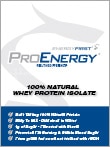|
|
EnergyFirst Nutrition Fundamentals:
Easy to Follow Guidelines for a Lifetime of Healthy Eating
The following nutrition fundamentals are easy to follow guidelines to balanced eating for optimal energy, fat burning, and health.
- Eat proactively
- Keep your house “clean”
- Eat 1 serving of lean protein every meal
- Eat 1 serving of good fats at least 3 times a day
- Avoid processed carbohydrates and eat unprocessed carbohydrates
- Combine carbohydrates with lean protein and/or good fats
- Meals should be “a fist, a thumb and a fist”
Eat proactively
- Eat at least every 4 hours, 4 to 6 small meals/snacks a day.
- Remember, if you are hungry your blood sugar is low, i.e. you are hypoglycemic, your brain is starving for fuel and you will crave sugar and make poor food decisions.
- Never skip meals.
- Always eat breakfast (e.g. an EnergyFirst Shake).
- Eating regularly raises your metabolism and increases fat burning.
Keep your house “clean”
- If you are going to have a “cheat meal,” do so outside of your home.
- Keep your house clean of “off program” foods.
- This will help you stay “on program” most of the time.
Eat 1 serving of lean protein every meal
- Protein is your greatest energizer.
- Protein helps you burn fat for fuel.
- Protein forms the building blocks of your lean muscle mass (the more muscle you have the higher your metabolism and the more fat you burn).
- Protein is the building blocks for your feel-good, energizing neurotransmitters, dopamine and norepinephrine.
- Protein boosts immunity against disease.
- It is essential that you include some lean protein every meal (and most snacks, where possible).
- Examples of lean protein include: salmon, tuna, and other fish, eggs, egg whites, chicken breast (no-skin), free range beef, wild game, turkey, shellfish, whey protein powder, low fat or non-fat cottage cheese, and non-fat yogurt, milk, and cheese.
Eat 1 serving good fats at least 3 times a day
- Good fats contain essential fatty acids omega 3 and 6.
- Essential fatty acids boost your immunity against disease, enhance your metabolism, reduce inflammation, reduce blood pressure and cholesterol, help stabilize your blood sugar and balance your hormones.
- The richest source of omega 3 is raw flax seed.
- The richest source of omega 6 is raw sesame, sunflower, and pumpkin seed.
- Pure, ultra-refined fish oil is a rich source of EPA/DHA, which is also essential for optimal cardiovascular and brain health.
- It is essential that you eat 1 serving of good fats at least 3 times a day.
- Examples of good fats include: raw seeds (flax, sunflower, sesame, pumpkin), raw nuts (almonds, cashews, walnuts, pecans), raw seed oils (a raw flax, sesame, sunflower, and pumpkin seed blend is best), avocado, extra virgin olive oil).
Avoid processed carbohydrates and eat unprocessed carbohydrates
- Limit, if not eliminate, processed carbohydrates, which include sugar, honey, and other sweeteners, cakes, white bread, breakfast cereals (except old fashioned oatmeal), white bread and other white flour products, white rice, white pasta, and other processed grains, dried fruit, granola, muesli, chips, jams, and jellies.
- Eat unprocessed, high-fiber carbohydrates, such as:
- Non-starchy vegetables (all green, yellow, red, and orange vegetables; but not white potatoes).
- Fresh or frozen fruit (high fiber fruit such as berries of any kind are best). Whole grains (brown rice, old fashioned oatmeal, kamut, quinoa).
- Legumes (lentils, beans, peas).
- Limit your intake of unprocessed carbohydrates to 1 serving per meal. 1 serving = 2-3 cups of non-starchy vegetables; or 1 cup of whole grains; or 1 slice whole grain bread/bagel; or 1 cup fresh or frozen fruit.
Combine carbohydrates with lean protein and/or good fats
- Lean protein and good fat slow down the conversion of the carbohydrates into glucose in your blood stream, making them time-released, therefore keeping your blood sugar stable and controlling the release of insulin.
- Although you can eat lean protein or good fats alone (because lean Protein and good fats do not disrupt your blood sugar), you should always eat carbohydrates with some lean protein and/or good fats.
- Examples of combination of carbohydrates and lean protein and/or fats include: salmon and asparagus. Fruit and raw nuts/seeds. Old-fashioned oatmeal with whey protein powder. Tuna and a mixed green salad with raw oil/balsamic vinegar dressing
Meals should be “a fist, a thumb and a fist”
- Build your main meals with at least 4-6 ounces of lean protein (“a fist”), 1-2 tablespoons of good fats (“a thumb”), and 1 cup of good (unprocessed) carbohydrates (“a fist”).
This is a brief except from the Energy Guidebook. The Energy Guidebook provides more detail and background regarding the guidelines offered above.
For more helpful information and tools, check out the Energy Guidebook. The Energy Guidebook will teach you a simple, practical, and effective lifestyle that will get you into the best shape of your life.
|
|

